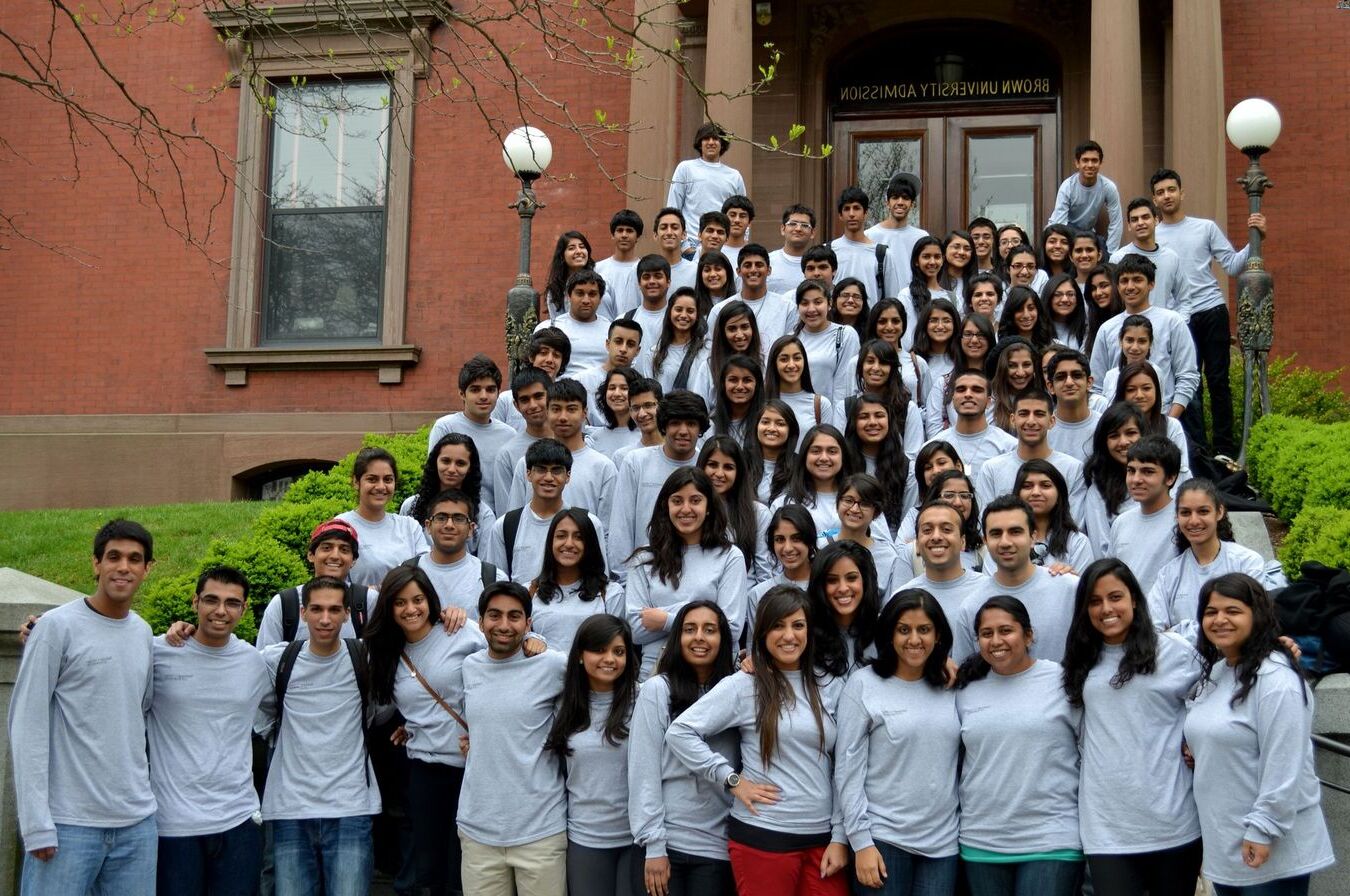
Did you know that the National Collegiate Athletic Association (NCAA) was founded in 1906 to regulate college sports and protect young athletes? From its early days addressing football's brutality to its current role in overseeing a wide range of sports, the NCAA has significantly shaped college athletics. Beyond sports, the NCAA has influenced trends in college education, including tuition costs and demographic shifts. With initiatives like the Name, Image, and Likeness (NIL) policy and health and safety efforts, the NCAA continues to evolve. Dive into these 50 fascinating facts to uncover the rich history and impact of the NCAA on college sports and education.
Founding and Early History
The National Collegiate Athletic Association (NCAA) has a storied past that dates back over a century. Its origins and early reforms laid the groundwork for what it is today.
- Founding of the NCAA: Established in 1906, the NCAA aimed to regulate college sports and protect young athletes. Concerns over the brutality of college football spurred its creation.
- Early Reforms: In 1905, President Theodore Roosevelt convened a meeting with athletics leaders to address football's safety issues. This led to the formation of the Intercollegiate Athletic Association of the United States (IAAUS), which became the NCAA in 1910.
- Expansion of NCAA Activities: The NCAA's first national championship in track and field took place in 1921, marking its expansion beyond football.
Governance and Structure
The NCAA's governance and structure have evolved to better manage the complexities of college sports.
- Sanity Code: Post-World War II, the NCAA introduced the "Sanity Code" to regulate financial aid, recruitment, and academic standards, aiming to maintain amateurism in college sports.
- Walter Byers: In 1951, Walter Byers became the NCAA's first executive director, serving for 36 years. He established the national office in Kansas City and implemented controls on live televising of football games.
- Divisional Structure: In 1973, the NCAA divided its membership into Divisions I, II, and III, each with distinct rules and regulations, allowing for more specialized governance.
Health, Safety, and Equality
The NCAA has made significant strides in health, safety, and equality for student-athletes.
- Health and Safety Initiatives: The NCAA Sport Science Institute, created in 2013, leads health and safety efforts. In 2014, the NCAA partnered with the Department of Defense on concussion research.
- Discrimination Policies: In 2016, the NCAA's Board of Governors required championship host cities to expand protections against discrimination based on sexual orientation or gender identity.
- COVID-19 Impact: The pandemic led to the cancellation of all winter and spring championships in 2020. Championships resumed in 2021 with extensive testing and precautions.
Name, Image, and Likeness (NIL) Policy
The NCAA's NIL policy represents a significant shift in how student-athletes can benefit from their personal brand.
- NIL Policy: In June 2021, the NCAA adopted a policy allowing student-athletes to profit from their name, image, and likeness. This change applies to all incoming and current athletes across all sports.
March Madness
March Madness, the NCAA Men's Basketball Tournament, is one of the most anticipated sporting events in the United States.
- March Madness: The tournament began 80 years ago and was first televised live 50 years ago. This year, 68 teams will compete in 67 games across 14 cities, culminating in the championship game on April 8.
- Office Pools: An estimated $10.4 billion is wagered on the tournament, including office pools. Last year, 73 million people filled out 170 million brackets. The odds of picking every game correctly are 1 in 9.2 quintillion.
- Seeds and Teams: The first tournament in 1939 featured eight teams, with Oregon winning. The field has grown to 64 teams since 1985. Kentucky has the most appearances at 58, followed by North Carolina, Kansas, UCLA, and Duke.
Championship Records
The NCAA Men's Basketball Tournament has a rich history of champions and memorable moments.
- Championships: UCLA holds the record with 11 tournament wins. Kentucky follows with eight titles, and North Carolina has six. Since 1985, the Atlantic Coast Conference (ACC) teams have the highest winning percentage.
- Undefeated Seasons: Seven teams have won the tournament with an undefeated season, including San Francisco, North Carolina, UCLA, and Indiana. The last team to enter the tournament undefeated was Kentucky in 2015.
- Kentucky’s Dominance: Kentucky was the last top-ranked team to win the tournament in 2011. Kansas holds the record for the most losses by a title team, with a 27-11 record in 1988.
Participation and Droughts
Participation in the NCAA tournament varies widely among schools, with some experiencing long droughts.
- Harvard’s Longest Drought: Harvard had a 66-year gap between NCAA appearances, from 1946 to 2012. Dartmouth currently holds the longest drought, last appearing in 1959.
- Participating Schools: Since 1939, 160 schools have been eligible to play in the tournament each year. Four schools have never participated: Army, St. Francis (NY), William & Mary, and The Citadel. Northwestern ended its drought by playing in its first tournament in 2017.
Media and Cultural Impact
The NCAA tournament has a significant media presence and cultural impact.
- Media Coverage: The first televised NCAA game was in 1951. Today, the Final Four games are broadcast on CBS, while the First Four play-in games air on TruTV.
- Office Pools Impact: Office pools are a big part of the tournament experience. Despite 81% of offices having no policy for pools, 89% believe they build better camaraderie. Challenger, Gray, and Christmas estimate that every hour spent on games costs employers $2.1 billion, totaling $13.3 billion over the tournament.
College Education Trends
Trends in college education, including costs and demographics, reflect broader societal changes.
- College Education Trends: The total cost of attending college includes tuition, fees, books, supplies, and living expenses. In 2022–23, costs varied by institution type and level.
- Tuition Costs: At 4-year institutions, average tuition and fees in 2022–23 were lower than the previous year. Private nonprofit institutions saw an increase in tuition and fees between 2012–13 and 2022–23.
- 2-Year Institutions: At 2-year institutions, average tuition and fees in 2022–23 varied by institution type. Private for-profit 2-year institutions had the highest average tuition and fees in 2012–13, followed by a decline.
Unique College Facts
Colleges have unique histories and traditions that contribute to their distinct identities.
- Greek Student Societies: The first Greek student society, Phi Beta Kappa, was founded at the College of William and Mary in 1776. The first Greek sorority, now Alpha Delta Pi, was founded in 1851 at Wesleyan Female College.
- Celebrity Commencement Speakers: Kermit the Frog spoke at Southampton College in 1996, highlighting the unique nature of college commencements.
- Harvard’s Academic Library: Harvard University boasts the largest academic library in the world, with 15.8 million volumes.
- College Names and Origins: The term "Alumni" comes from the Latin "Alumnus," meaning "foster son." "Alma mater" means "nurturing mother" in Latin.
- First College to Graduate Women: Oberlin College was the first to graduate women in 1841. It also graduated the first African-American woman, Mary Jane Patterson, in 1862.
- First Football Game: The first football game between two colleges took place in 1869 between Princeton and Rutgers, with Rutgers winning 6-4.
- All-Female and All-Male Colleges: There are 60 all-female colleges in the U.S. but only four all-male colleges.
- Yale’s Skull and Bones Society: Yale's prestigious senior society, Skull and Bones, includes former presidents George H.W. Bush and George W. Bush, as well as William Howard Taft.
College Acceptance Rates and Demographics
College acceptance rates and student demographics provide insight into the competitive nature of higher education.
- College Acceptance Rates: The colleges with the lowest acceptance rates include Curtis Institute of Music (2.9%), Stanford (5%), Harvard (5%), Yale (7%), and Columbia (7%).
- Ivy League Colleges: The Ivy League consists of eight prestigious colleges: Brown, Columbia, Cornell, Dartmouth, Harvard, Penn, Princeton, and Yale.
- Female College Students: Nearly 60% of all college students are female, reflecting broader societal changes.
Unique College Stories
Colleges often have unique stories that add to their rich histories.
- Dave MacPherson and Disneyland: Dave MacPherson, a Long Beach State University student, was the first person to enter Disneyland. He didn't ride any attractions because he had to return to class.
- Sports Stadiums: Fourteen of the 25 largest sports stadiums in the world belong to American college football teams.
- Kalamazoo Promise: The Kalamazoo Promise is a foundation that pays for the college education of students who graduate high school in Kalamazoo, MI.
NCAA Wrestling
NCAA wrestling has a rich history of champions and memorable moments.
- Penn State Wrestling: Penn State is the third school to reach double digits in NCAA wrestling titles, joining Oklahoma State and Iowa. Coach Cael Sanderson has led the team to nine titles.
- Michigan’s Runner-Up Finish: Michigan's sixth runner-up finish in the NCAA wrestling tournament ties them with Iowa and Minnesota for fourth place.
- Multi-Time Champions: Of the 199 multi-time champions in tournament history, 11 have won titles for Penn State in the past decade.
- Historical Data: Penn State has had a national champion in each of the last 11 tournaments. Minnesota is the only other school with a current string longer than one.
College Football Stadiums
College football stadiums are some of the largest in the world, reflecting the sport's popularity.
- College Football Stadiums: Fourteen of the 25 largest sports stadiums in the world belong to American college football teams.
Greek Student Societies and Commencement Speakers
Greek student societies and unique commencement speakers add to the rich traditions of colleges.
- Greek Student Societies: The first Greek student society, Phi Beta Kappa, was founded at the College of William and Mary in 1776. The first Greek sorority, now Alpha Delta Pi, was founded in 1851 at Wesleyan Female College.
- Celebrity Commencement Speakers: Kermit the Frog spoke at Southampton College in 1996, highlighting the unique nature of college commencements.
Harvard’s Academic Library and College Names
Harvard's library and the origins of college names reflect the rich history of higher education.
- Harvard’s Academic Library: Harvard University boasts the largest academic library in the world, with 15.8 million volumes.
- College Names and Origins: The term "Alumni" comes from the Latin "Alumnus," meaning "foster son." "Alma mater" means "nurturing mother" in Latin.
First College to Graduate Women and First Football Game
Milestones in college history include the first college to graduate women and the first football game.
- First College to Graduate Women: Oberlin College was the first to graduate women in 1841. It also graduated the first African-American woman, Mary Jane Patterson, in 1862.
- First Football Game: The first football game between two colleges took place in 1869 between Princeton and Rutgers, with Rutgers winning 6-4.
All-Female and All-Male Colleges and Yale’s Skull and Bones Society
The landscape of higher education includes all-female and all-male colleges, as well as prestigious societies like Yale's Skull and Bones.
- All-Female and All-Male Colleges: There are 60 all-female colleges in the U.S. but only four all-male colleges.
- Yale’s Skull and Bones Society: Yale's prestigious senior society, Skull and Bones, includes former presidents George H.W. Bush and George W. Bush, as well as William Howard Taft.
The National College's Impact
The National College has a rich history and significant influence on both sports and education. From its founding in 1906 to regulate college sports, it has grown into a powerhouse that oversees numerous championships and initiatives. The NCAA's commitment to health and safety, anti-discrimination policies, and student-athlete rights showcases its evolving role. The March Madness tournament, with its massive following and economic impact, highlights the cultural significance of college sports. Additionally, trends in college education, such as rising tuition costs and the increasing number of female students, reflect broader societal changes. The National College continues to shape the landscape of higher education and athletics, making it an essential part of American culture. Understanding these facts provides a comprehensive overview of its importance and ongoing contributions.
Was this page helpful?
Our commitment to delivering trustworthy and engaging content is at the heart of what we do. Each fact on our site is contributed by real users like you, bringing a wealth of diverse insights and information. To ensure the highest standards of accuracy and reliability, our dedicated editors meticulously review each submission. This process guarantees that the facts we share are not only fascinating but also credible. Trust in our commitment to quality and authenticity as you explore and learn with us.


